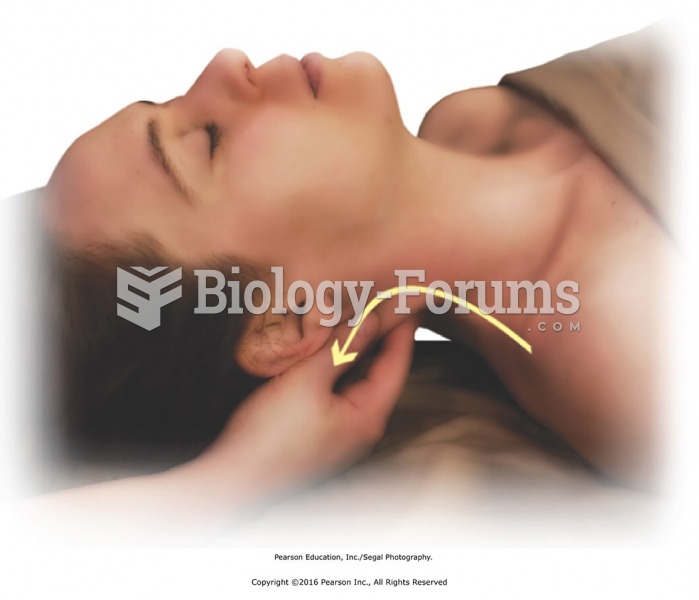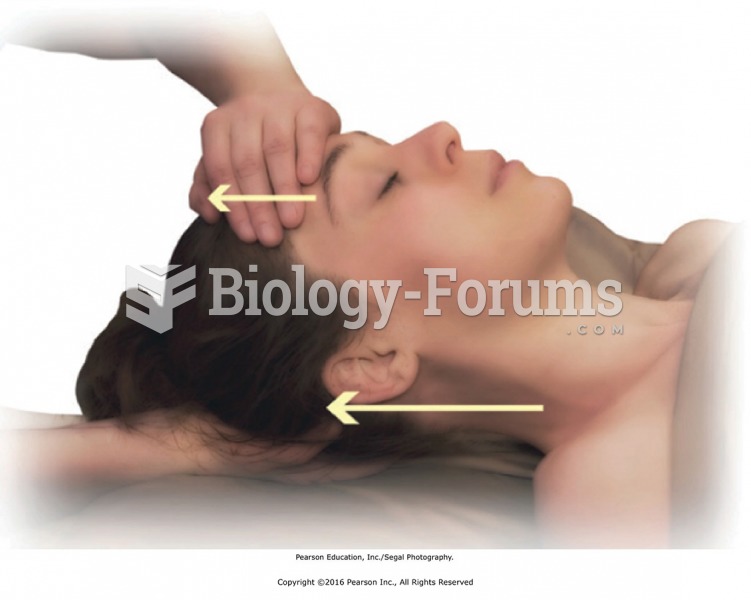|
|
|
To prove that stomach ulcers were caused by bacteria and not by stress, a researcher consumed an entire laboratory beaker full of bacterial culture. After this, he did indeed develop stomach ulcers, and won the Nobel Prize for his discovery.
Asthma occurs in one in 11 children and in one in 12 adults. African Americans and Latinos have a higher risk for developing asthma than other groups.
The average older adult in the United States takes five prescription drugs per day. Half of these drugs contain a sedative. Alcohol should therefore be avoided by most senior citizens because of the dangerous interactions between alcohol and sedatives.
Symptoms of kidney problems include a loss of appetite, back pain (which may be sudden and intense), chills, abdominal pain, fluid retention, nausea, the urge to urinate, vomiting, and fever.
There are more bacteria in your mouth than there are people in the world.
 The anatomical position: standing erect, gazing straight ahead, arms down at sides, palms facing for
The anatomical position: standing erect, gazing straight ahead, arms down at sides, palms facing for
 Oil pressure relief valves are spring loaded. The stronger the spring tension, the higher the oil ...
Oil pressure relief valves are spring loaded. The stronger the spring tension, the higher the oil ...





